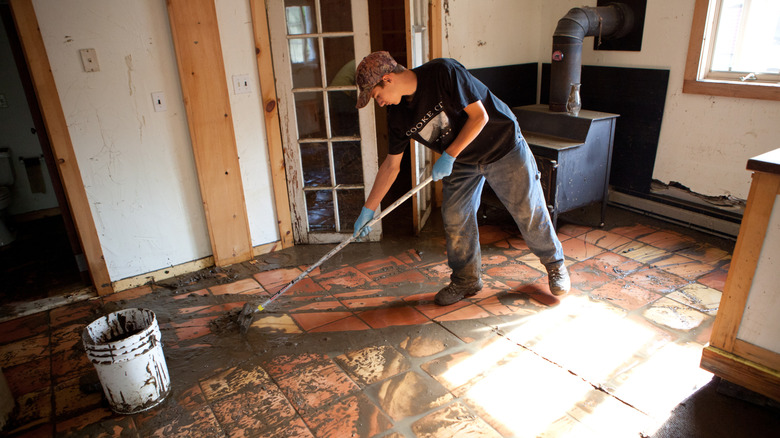How Long Does It Take For Flood Insurance To Go Into Effect?
Flooding is one of those major disasters that comes and goes fast, but leaves a slow march toward recovery behind. As extreme weather becomes more common, communities that never used to worry about floods are suddenly facing them, leaving many households unprepared and exposed. There's never a good time for water to enter your home. It seeps into your floors, walls, and electrical systems. It ruins furniture and appliances. Even when it doesn't breach the interior, storm water can wreak havoc on your yard, damage your foundation, and turn your property into a mud pit that costs a fortune to fix. The financial and emotional toll adds up quickly and can last for months, which is why understanding flood insurance matters long before a storm hits, and it can take between two weeks and 30 days before your insurance goes into effect.
While no policy can prevent Mother Nature from flooding your area, flood insurance is designed to help with recovery. Homeowners with federally backed mortgages in high-risk flood zones are required to carry it, but as flooding in other areas becomes more common, many of us are investing in optional policies for peace of mind. You may be surprised to learn that homeowners insurance policies don't cover flooding, and finding out after your area is hit by a hurricane or superstorm is the worst possible time to discover that you don't have coverage. Unlike other types of insurance homeowners need, most flood insurance is issued through the FEMA-managed National Flood Insurance Program (NFIP). Dozens of insurance companies partner with the program, relying on policy rates determined by your specific location to make coverage more affordable. However, these policies are subject to waiting periods and don't immediately go into effect.
Explaining flood insurance waiting periods
Whether you secure coverage through the NFIP or a private flood insurer, you're likely to wait between two weeks and 30 days before your policy goes into effect. Unlike auto and homeowners coverage, that means even if you purchase a policy today, you generally won't have any coverage for flood-related losses for several weeks. Although there are some exceptions, like when the policy is mandated by a government-backed lender as part of a new home purchase or when it's related to a flood map change, securing immediate coverage is extremely rare. Most companies suspend offering new policies altogether when a storm is already brewing.
You may find the delay frustrating, but it exists for an important reason. Flood events are often forecast days in advance, and without a waiting period, thousands of people would only buy coverage right before a storm hits. FEMA and Congress have always honored flood insurance contracts that are already in place during severe weather events. But the bottom line for both federally-backed and private policies is that waiting periods prevent last-minute purchasing that would collapse the programs because underwriting losses would inevitably be much higher. Instead, waiting periods mean that people pay into the system year-round so funds are always available when disasters strike.
If you live in a high-risk area or you've noticed worsening storms in your area, waiting to buy flood insurance coverage until a major storm is headed toward your house is a big mistake. There's only so much you can do to make sure your home is safe from a flood. But planning ahead ensures you're protected if the worst happens.

